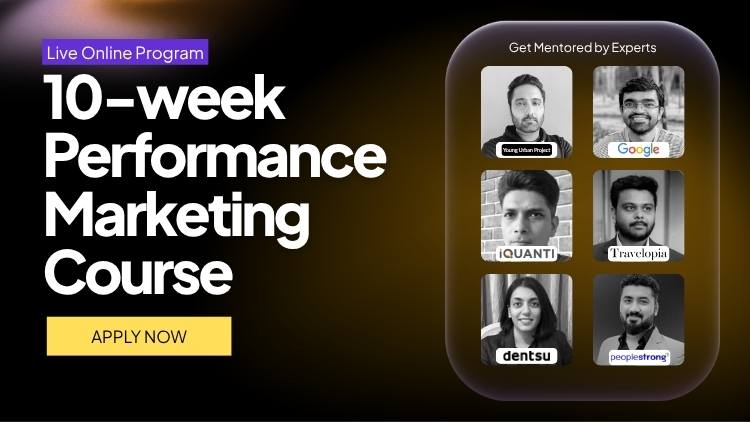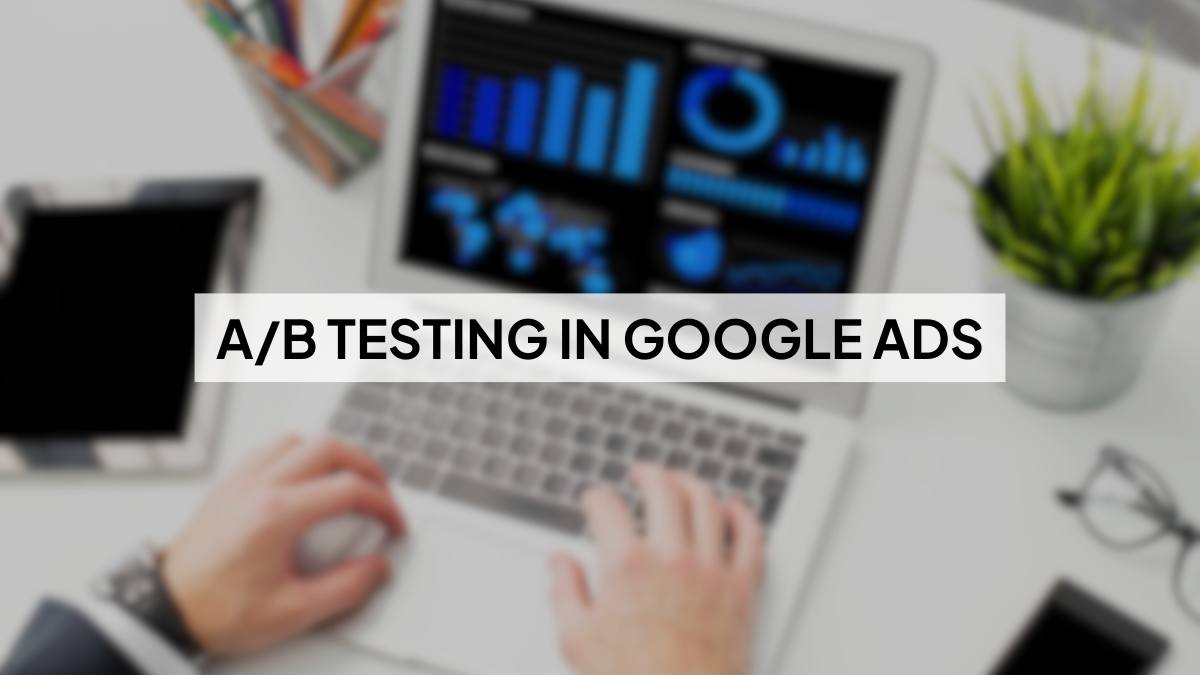A/B testing in Google Ads is a simple but powerful way to improve your ad performance. It works by running two versions of an ad, usually with one small difference like the headline or CTA, and seeing which one gets better results. Over time, this helps you spend smarter, boost click-through rates, and get more conversions without increasing your budget. Whether you’re testing copy, landing pages, or targeting, A/B testing gives you real data to guide decisions. No guesswork. Just clear results that tell you what’s actually working with your audience, and what’s not.
Table of Contents
A/B Testing in Google Ads: What it is and Why it Matters
Ever had two ads running, and one just takes off while the other… kinda flops? Like, one’s getting clicks all day, and the other’s just sitting there wasting budget?
That’s exactly where A/B testing comes in. It’s how marketers figure out why one version works better than the other. You take two versions of an ad, let’s say you change just the headline, and see which one gets more clicks or leads. It’s a pretty simple idea, but it can completely change how well your campaigns perform.
And honestly, once you start doing it regularly, you realize how much guesswork you were doing before. A/B testing takes the guesswork out. It lets the actual results tell you what’s working, not just your gut.
In short: test two things, pick the winner, keep improving. That’s it.
What is A/B Testing in Google Ads?
Let me paint a picture real quick.
Say you’re promoting an online course. You write two different ad headlines. Everything else stays the same, same landing page, same targeting, same description.
Now…
- Version A says: “Learn Digital Marketing from Experts”
- Version B says: “Become a Digital Marketing Pro in 6 Weeks”
You run both. Half the people see A, half see B. After a few days or weeks, you check the data, maybe version B gets more clicks, or more signups.
That’s your answer. You didn’t have to guess. You just let the real audience tell you what worked.
That’s A/B testing.
Think of it kind of like cooking for friends. You make two versions of pasta, one with garlic, one without. You see which one gets eaten faster. Then next time, you know what to go with. Simple.
It’s not about being fancy or technical. It’s just making small changes, testing them, and learning from the outcome.
Alt text: “A/B test ad variants in Google Ads comparing headline and CTA”
Also Read: A/B Testing vs Multivariate Testing
Why Is A/B Testing Important for Google Ads?
Here’s the thing – Google Ads isn’t cheap. Even if you’re running small daily budgets, every click matters. And A/B testing helps you make the most of each one.
Let’s break down the benefits:
1. Higher CTR and Conversions
A strong headline or call-to-action can be the difference between someone scrolling past or actually clicking. And when more people click and convert? Your ROI goes up. Simple math.
2. Lower Wasted Ad Spend
If you’re spending money on underperforming ads, that’s basically flushing cash. A/B testing helps you cut what’s not working – before it burns through your budget.
3. Better Understanding of Your Audience
Sometimes, the version you think will win… totally flops. A/B testing reveals what actually connects with your audience. You start seeing patterns in what people respond to.
4. Improved Quality Score
Google rewards relevance. When your ads perform better (higher CTRs, better engagement), your Quality Score improves. That can lower your CPCs over time.
A/B testing helps advertisers improve performance by testing real changes instead of relying on assumptions. According to WordStream, it’s one of the most effective ways to optimize PPC campaigns and improve ROI over time.
Also Read: How to Become a Google Ads Specialist
What Elements Can You A/B Test in Google Ads?
You don’t always need a huge overhaul to improve your ad performance. Sometimes just changing one piece, even a word, can move the needle. Below are different parts of your Google Ads that are worth testing. Try one at a time. Keep it simple.
1. Headlines
This is what people see first. If the headline doesn’t make someone pause or feel curious, they’ll scroll right past. Try a benefit-led version vs one that sparks urgency. Even switching “Learn” to “Master” can change the vibe. I’ve seen boring headlines crush fancy ones. Worth testing.
2. Descriptions
Don’t just describe, try different ways to talk about value. One version could highlight speed (“Get results in 3 days”), another might focus on support (“Dedicated help when you need it”). Also test sentence structure. Sometimes shorter punchy lines work, sometimes full sentences convert better.
3. Call-to-Action (CTA)
CTAs are weird, small change, big impact. “Start Today” vs “Get Started Free” might feel similar, but one could double your clicks. Depends on the audience. Try action words. Try softer asks. Test what makes someone actually feel like, “Yeah okay, I’ll click.”
4. Display URL
Even if it’s not the real page URL, people look at this. “/free-demo” looks more interesting than “/homepage.” You can test different slug text that matches the offer or builds trust. I’ve had ads perform better just because the URL felt more relevant. It’s subtle, but it matters.
5. Landing Page
This is where you either win or lose. Two people click the same ad, one bounces, one signs up. Why? Could be layout, message, even the headline again. Test versions with video vs no video, short vs long. You can keep the ad the same and just tweak the page.
Also Read: AI Landing Page Optimization
6. Bidding Strategy
Not visual, but crucial. One campaign could be using Manual CPC, another on Max Conversions, and results might be night and day. If you’re not seeing results, try switching. Let each strategy run long enough before judging though. It’s not always instant.
7. Ad Extensions
These are the extra links and info below your main ad. You can test which ones help, maybe sitelinks to key pages, or callouts that add urgency like “Limited Offer.” Sometimes people click the extension instead of the main ad. Those clicks count too, and they’re often cheaper.
8. Target Audience
Even the best ad fails if it’s shown to the wrong people. Try running the same ad to two different audience segments, like website visitors vs cold traffic. You might find one group converts way better. It’s not always about changing the ad, sometimes it’s about who sees it.
9. Keywords
Some keywords bring traffic, but not the right kind. You could be paying for clicks from people who aren’t looking for what you offer. Try testing a more specific phrase or exact match. Or cut a few broad ones that might be wasting budget. Keyword testing’s a must, especially early on.
10. Ad Format
Responsive Search Ads (RSAs) vs the older Expanded Text Ads (ETAs), format matters. RSAs let Google mix and match your text, which can help performance, but not always. Some marketers swear by RSAs, others prefer control. If you still have access to both, test them side by side.
Also Read: Right Budget Google Ads Campaign
How to Do A/B Testing in Google Ads (Step-by-Step)
If you’ve never done A/B testing in Google Ads before, don’t worry, it’s easier than it sounds once you break it down.
1. Start with a Clear Goal
Before you change anything, ask yourself: What exactly do I want to improve?
It could be something like:
- “I want more people to click my ad.”
- “I want more signups on my landing page.”
- “I want to reduce the cost I pay for each conversion.”
Pick one clear goal. This helps you know whether your test worked or not. If your goal is too vague, you won’t know what success looks like.
2. Choose One Thing to Test
This is super important: test only one element at a time.
Let’s say you want to test your ad headline. Don’t change the headline, description, and URL all at once – you won’t be able to tell which change caused the result.
Here are some examples of single-variable tests:
- Test Headline A vs Headline B
- Try one CTA like “Sign Up Today” vs “Start Free Trial”
- Compare two landing pages with different layouts
Stick to one change per test. That’s the only way to get clear answers.
3. Make a Small Prediction (Hypothesis)
You don’t need to overthink this.
Just write down what you think will happen and why.
For example:
“I think headline B will perform better because it sounds more urgent and action-focused.”
This step isn’t just a formality – it keeps your tests intentional. You’re not just throwing changes at the wall to see what sticks.
4. Set Up the Experiment in Google Ads
Now it’s time to actually build the test.
There are two easy ways inside Google Ads:
Option 1: Ad Variations Tool
Great if you’re testing things like:
- Headlines
- Descriptions
- Display paths
You can create multiple versions of the same ad and Google will rotate them equally.

Enroll Now: AI-Powered Performance Marketing Course
Option 2: Experiments (Drafts & Experiments)
This one’s for bigger changes like:
- Testing different bidding strategies
- Trying new landing pages
- Changing audience targeting
You create a “draft” version of your campaign with your change, then split traffic between your original and the test version.
Google will handle the split and track performance side-by-side.
5. Let the Test Run
Here’s where patience comes in.
Run your test for at least 2 weeks – or longer if you don’t get much traffic.
Why? Because you need enough data to trust the results. If you stop too soon, you might make a decision based on random spikes or early impressions.
A good rule of thumb:
Wait until both versions have gotten enough clicks and conversions to feel confident in the outcome.
6. Check the Results Carefully
Once the test has enough data, dig into the numbers.
Look at:
- CTR (Click-Through Rate): Are more people clicking one version?
- CPC (Cost Per Click): Which one is more cost-efficient?
- Conversion Rate: Which version actually leads to more actions (like signups or sales)?
- ROAS (Return on Ad Spend): Are you making more money back from one version?
You can use Google’s built-in experiment reporting – it often shows you which version is “winning” with a percentage of confidence (like 95% sure).
Also Read: Top Performance Marketing Metrics
7. Pick the Winner and Make It Official
If one version clearly performs better – go ahead and switch to it in your actual campaign.
No need to keep the losing ad running once you know which one works best.
But if the results are too close to call? Maybe test again with a bigger difference.
8. Take Notes and Plan the Next Test
Every test teaches you something – even if it fails.
Keep a simple log like:
- What you tested
- What the goal was
- What happened
- What you’ll do next
This way, over time, you build a better and better system – not just one good ad.
Ways to Set Up A/B Tests in Google Ads
Alright, so you know what to test. But now the big question, how do you actually set up these tests in Google Ads?
There are a few different ways to do it. Some are built right into the platform, while others are more manual. Here’s how each one works (and when to use them):
1. Ad Variations Tool
This is probably the easiest way to start if you’re testing something like ad copy, headline, description, etc.
Inside Google Ads, there’s a tool called Ad Variations. You can find it under the “Experiments” section. You pick which campaign you want to test in, then choose what you want to change, like replacing a certain word in your headline across multiple ads.
Once it’s live, Google will split your traffic between the original and the variation, and you can compare results side by side.
💡 Best for: Testing different copy ideas without messing with campaign structure.
2. Drafts & Experiments
This one’s a bit more advanced, but it gives you way more control.
You basically clone your campaign into a “draft,” make your changes inside the draft (like different targeting or a new bidding strategy), and then turn it into an experiment. Google will split traffic between your original and this new draft, and you can track everything side-by-side.
This is perfect when you’re testing bigger changes, like:
- New landing pages
- Audience targeting
- Budget strategy
- Devices or geo-targeting
Yeah, it’s a few extra steps, but the data is much cleaner. Plus, you can easily apply the winner with one click.
💡 Best for: Full-funnel tests or anything beyond just ad text.
3. Manual Duplication
Not gonna lie, sometimes I still go old-school and just duplicate the ad inside the same ad group, change one thing, and let them both run.
Google will rotate them automatically (if you set ad rotation to “do not optimize”), and over time, you’ll see which one gets more clicks or conversions.
It’s not as clean as the built-in experiments, and it doesn’t give you fancy confidence intervals or anything. But it works, especially if you just want to test a quick headline or CTA without setting up a full experiment.
💡 Best for: Fast, no-fuss testing.
4. Third-Party Tools
There are tools like Optmyzr, Adalysis, or even SplitMetrics that help automate the testing process. These tools can help you set up more advanced A/B tests or even test multiple ads at once without manually digging into every campaign.
They’re great if you’re managing multiple accounts or just want faster insights. But for most people, Google’s native tools are more than enough.
💡 Best for: Agencies or performance marketers managing at scale.
Also Read: Google Ads vs Facebook Ads
Best Practices for Google Ads A/B Testing
- Stick to one variable at a time. Don’t muddy the waters.
- Let the test run long enough. At least two weeks, longer if traffic is slow.
- Avoid peak seasons or holidays. They mess with normal patterns.
- Name your tests clearly. Helps later when you’re trying to remember what you changed.
- Set your KPIs before you start. What are you actually trying to improve?
- Don’t give up after one test. One result isn’t a pattern, it’s a clue.
- Write everything down. Every test teaches you something, even the bad ones.
The Ultimate Google Ads A/B Testing Checklist
| Step | Description |
| Define the goal | Be clear. “I want to increase CTR by 10%” is better than “make ads better.” |
| Choose one variable | Headline, CTA, landing page, pick one. Not two. |
| Build ad variations | Keep them as similar as possible, except for the thing you’re testing. |
| Set up experiment | Use Google’s built-in tools, Ad Variations or Experiments. |
| Let it run | Don’t panic after 3 days. Give it time. 2–4 weeks minimum. |
| Track the right metrics | CTR, CVR, CPC, ROAS, pick what matters most for your goal. |
| Apply the winner | Update your campaign once you’ve got a clear result. |
| Document everything | Write down what worked, what didn’t, and what to try next. |
Common A/B Testing Mistakes to Avoid
We’ve all done at least one of these. Hopefully not all at once:
- Testing too many things at once (you won’t know what caused the change)
- Stopping the test too soon
- Ignoring whether the difference is actually statistically significant
- Not breaking down the results by device or audience
- Forgetting to document, and then repeating the same test later
Just keep it tight, focused, and patient.
FAQ: A/B Testing in Google Ads
Q1: How long should an A/B test run on Google Ads?
I’d say, at the very least, give it a couple of weeks. If your campaign doesn’t get much traffic, maybe even longer. You need enough clicks or conversions to make any kind of useful decision, otherwise, it’s just guesswork.
Q2: Can I test multiple ads at once in Google Ads?
Yes, you can run multiple ads at the same time in a single ad group. But for accurate A/B testing, only change one element between ads. If you test too many things at once, it’s hard to know what worked.
Q3: What tool inside Google Ads is best for A/B testing?
Depends on what you’re testing. If it’s just the ad text, use the Ad Variations tool. But if you’re changing something bigger, like targeting or bidding, the Drafts & Experiments setup works better. Both are built-in and easy to use once you try them.
Q4: What’s a good sample size for A/B testing?
There’s no perfect number, but ideally, you want 100 conversions per version. If that’s not realistic, then just make sure there’s enough data to feel confident. If results are flipping back and forth every day, you probably need more time.
Q5: Is A/B testing possible for responsive search ads?
Yeah, you can test different combinations inside an RSA. Or if you still have expanded text ads running, you can test them against RSAs. The trick is to keep the test focused, don’t throw in 15 different headlines and hope one sticks.

